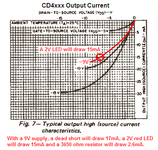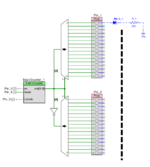Alistair Ballantyne
Junior Member level 2

Hi – I can’t get this circuit to work and don’t see why.
The circuit calls for a 47k resistor from negative terminal to the connection of LED’s but I get nothing to work at all with this arrangement. If I take out the resistor then:
Attached is scan of circuit diagram and pictures of breadboard.
Am I doing something stupid here or is the circuit suspect?
Appreciate your help.
Thank you
Alistair



The circuit calls for a 47k resistor from negative terminal to the connection of LED’s but I get nothing to work at all with this arrangement. If I take out the resistor then:
- If the pot is turned up then all LED’s remain lit (no chasing).
- If turned down then one LED lights.
Attached is scan of circuit diagram and pictures of breadboard.
Am I doing something stupid here or is the circuit suspect?
Appreciate your help.
Thank you
Alistair




